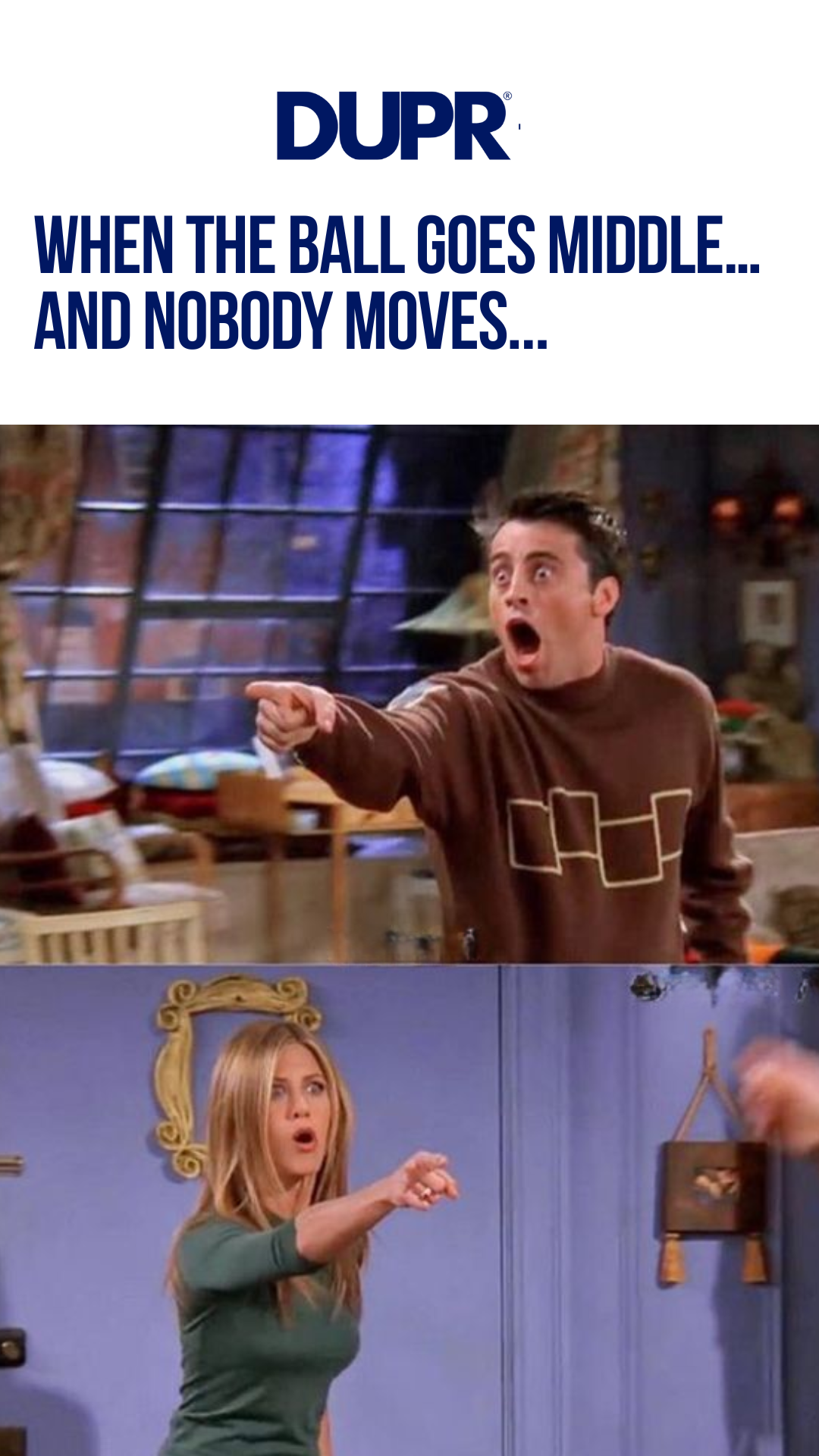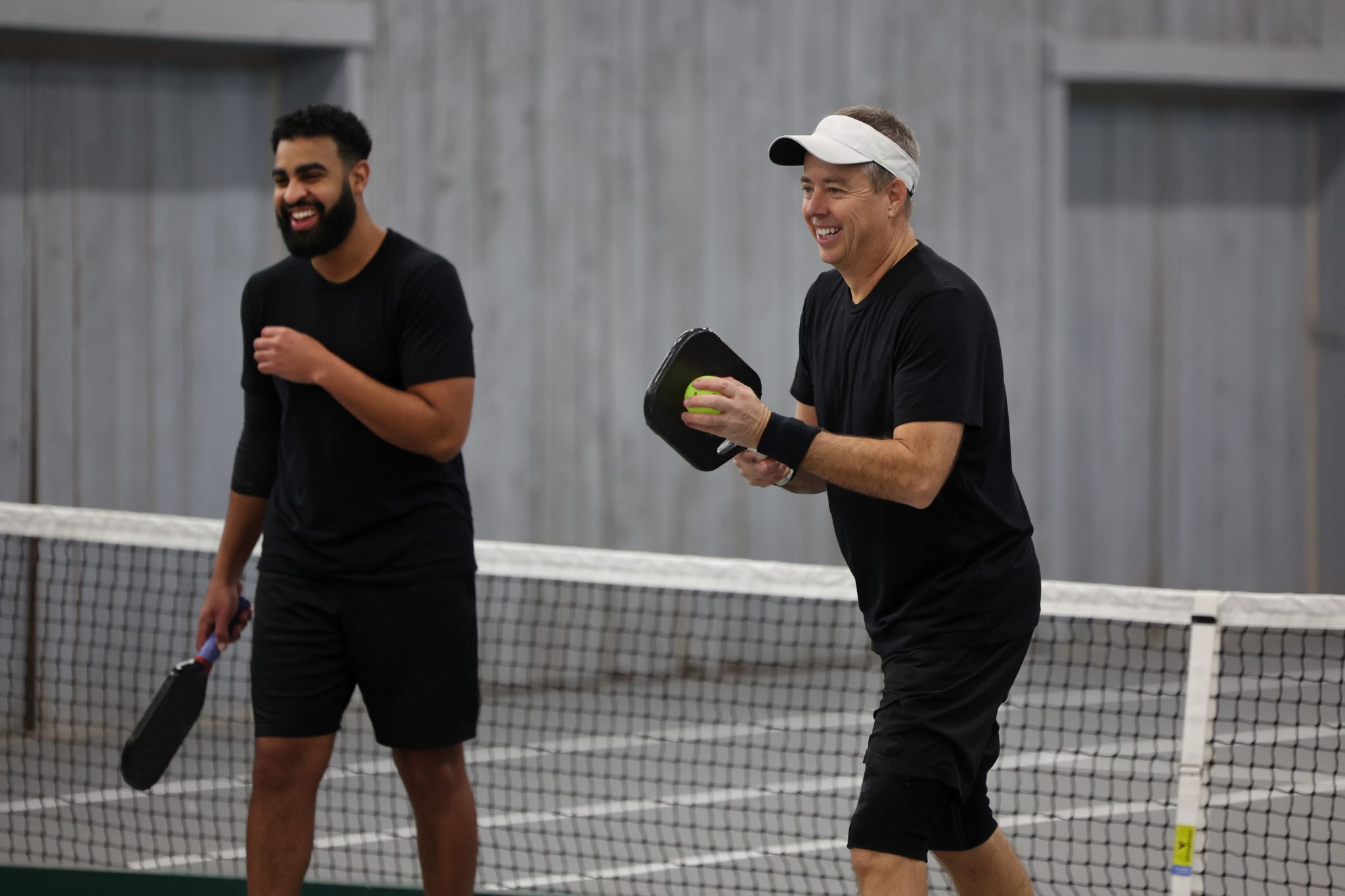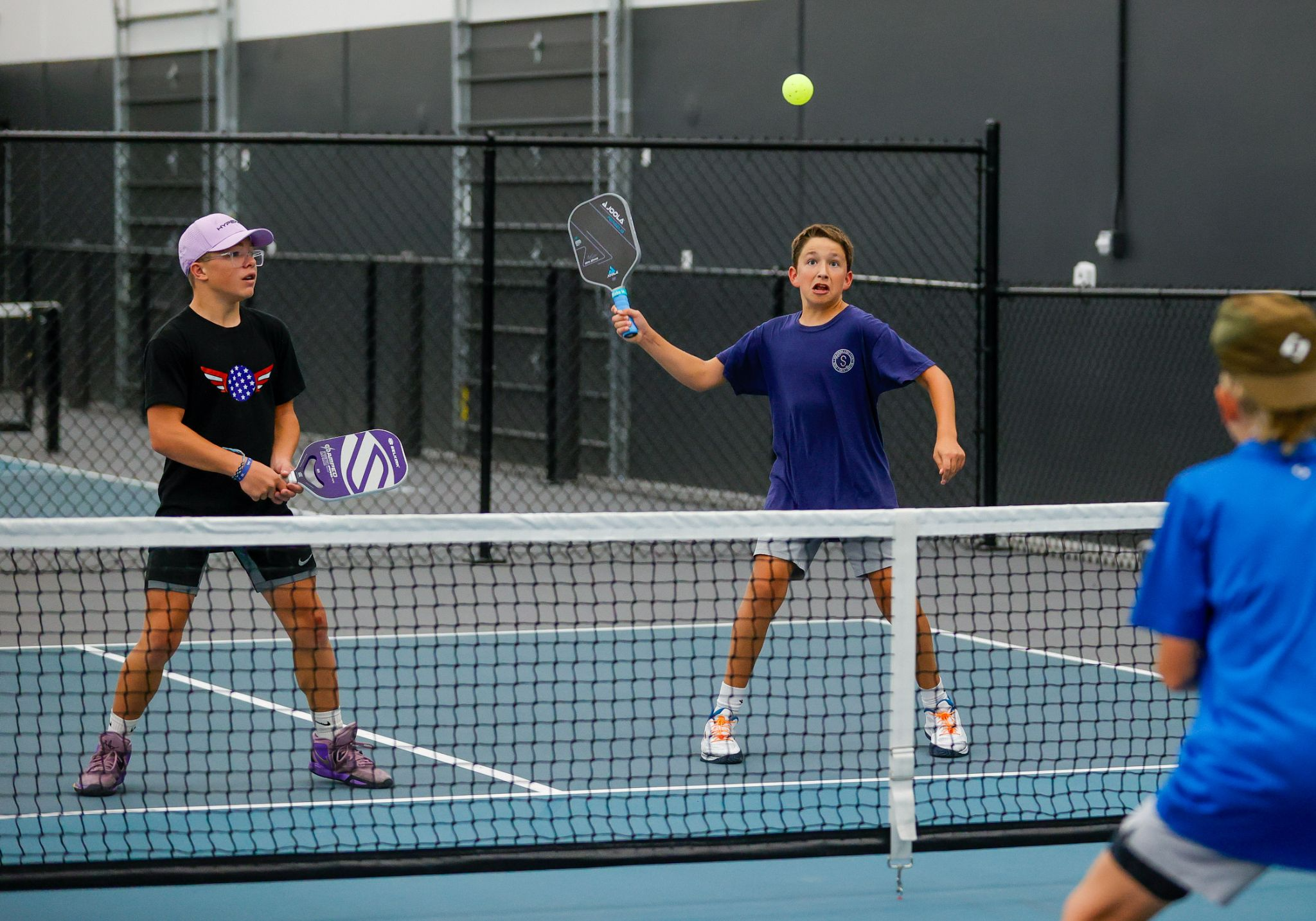Middle Ball: Who Takes It and When?
.jpg)
We’ve All Been There…
You’re locked into a rally. Suddenly, the ball goes down the middle. You and your partner pause, glance, and… no one moves. You just lost the point.
The situation of the “middle ball moment” is one of the most common and avoidable missteps in pickleball strategy. But who’s actually supposed to take that shot? It depends. And understanding middle ball ownership is key to leveling up your game, especially if you're tracking your DUPR rating, playing in pickleball tournaments, or playing in your first Minor League Pickleball event.
Let’s break it down.
Why the Middle Ball Is So Important
The middle is the highest percentage shot in pickleball and one of the most misplayed. Players target it because it:
- Keeps the ball away from sidelines
- Tests your team’s communication
- Forces opponents to make a fast decision
But for teams who don’t plan in advance for who is covering the middle, it creates hesitation, confusion, or worse collisions. Even one mistake here can tank a tight game or hurt your pickleball rating.

The Default Rule: Forehand Takes the Middle
A common rule of thumb at every level of pickleball (from beginners to pros) is this:
When in doubt, the player with the forehand in the middle takes the shot.
This simple guideline helps to:
- Prevent hesitation
- Maximize power and control
- Ensure consistent court coverage
In most right-handed pairings, that means the left-side player should step in and take charge of the middle. But keep in mind: this isn’t a hard-and-fast rule. There are plenty of rallies where exceptions apply. Here’s what to watch for.

4 Situations Where That Rule Changes
Even at the pro level or in DUPR-sanctioned team events, players adapt based on context. Here’s when the forehand rule breaks:
Positioning on the Court
If the forehand player is recovering or out of reach, the other player may have a cleaner shot, even if it’s a backhand. Footwork and awareness matter more than hand dominance here.
For more tips on court positioning, check out this blog.
Strengths
Sometimes, one partner is simply stronger at a certain shot. Especially in tournaments, partners may pre-designate the more consistent player to “own” the middle.
Lefty-Righty Teams
When a lefty and righty play together, both forehands are in the middle. This sounds great but it’s easy to overreach or second-guess unless the team clearly defines roles.
Pre-match communication is essential. Check out our full communication guide to help you and your partner level up your game.
Clear Communication
Saying “MINE!” or “YOU!” overrides everything. Clear, early calls prevent confusion more than any technical rule ever will.
Communication Wins Championships
Silent teams lose points. Elite teams talk constantly even in non-verbal cues or one-word commands. Try these:
- “Mine!” (you are taking the ball)
- “Yours!” (partner takes it)
- “Bounce!” (don’t hit it out of the air)
Use the 80/20 Rule:
- 80% of middle balls follow the forehand rule
- 20% should adapt based on positioning and player roles

How Middle Ball Strategy Affects Your DUPR Rating
Your DUPR rating isn’t just based on winning or losing. DUPR’s algorithm factors in every single point won and lost. Hesitating or misplaying the middle ball can cost points and that costs you rating accuracy.The better your team's chemistry and middle-ball confidence, the higher your rating ceiling becomes.
3 Drills to Sharpen Middle Ball Awareness
Middle Feed Drill
Feed a stream of balls down the centerline. Alternate who calls the ball and ensure communication is immediate and loud.
Forehand Only Drill
Only allow forehand middle shots. This builds reaction time and helps lock in which player takes what, especially for new partners.
Tournament Simulation Drill
Play mini games where middle balls are emphasized. Penalize silence or hesitation. Try to recreate real pressure.
Conclusion: Small Tactic, Big Results
The middle ball is one of the most important communication decisions in doubles pickleball. From casual rec games to competitive Minor League Pickleball, knowing who takes the middle can be the difference between a clean win and a messy loss.



%20(Instagram%20Post)%20(1)%20(2).jpg)
%20(1).jpg)







